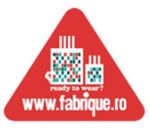Look what we found on the internet while searching our name -really usefull for us:
Ways of Naive Designers
Early in their design work, beginning designers…
a. Stick with their first design idea, which they don't want to let go of (versus brainstorming a lot of ideas, and throwing out most of them)
b. Think that the first thing to do is agree on the big design decisions, and then build them (versus delaying design decisions until what's important is better known)
c. Spend too much time researching or planning a complicated initial plan (versus doing rapid prototyping where they construct a number of mock-ups quickly to learn what does and doesn't work)
d. Perform design actions with little talk or reflection(versus exploring first principles of science or engineering that may apply to and inform what is being designed)
e. Stay within the problem's constraints and practical limitations too much (versus temporarily disregarding limits and coming up with wild "dream designing" ideas)
f. Work in-depth on a single design plan for nearly the entire time allotted (versus exploring a range of solutions quickly)
g. Approach a design task as an amorphous whole, working on whatever problem emerges at the moment (versus breaking the whole system down into parts, and then working these sub-systems in an orderly way)
In The Middle of Designing…
h. Figure out the challenge's requirements and limits once, and then moving on to building the robot (versus periodically revisiting these initial assumptions)
i. Continually adapt and add features to same idea until it becomes overly complicated (versus following the KISS rule to Keep It Simple, Stupid)
j. Jump from one design idea to another with little reflection (versus reflecting on what worked and what didn't in each design iteration, and then consciously applying those lessons learned to the next design).
k. Make drawings that show surface features or mechanisms that could not work if built (versus making drawings that show how things are connected, and highlight critical design decisions).
l. Forever tweaking and changing the design, even to the last day (versus setting a deadline after which no major changes can be made to the planned design).














No comments:
Post a Comment